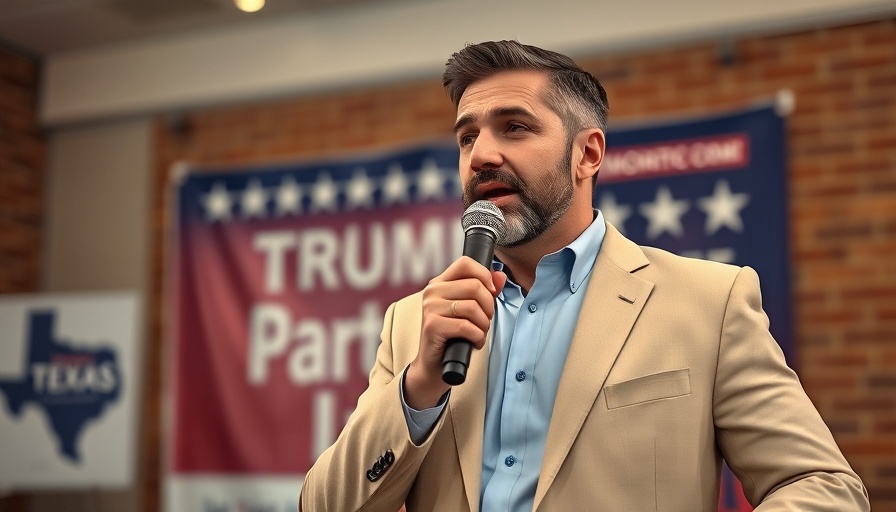
Tragedy Strikes Texas Oilfield: Worker Safety and Environmental Concerns in Focus
On February 6, 2024, Pedro Julian Garcia, a 26-year-old employee at McBride Operating in Waskom, Texas, tragically lost his life when a pump valve blew off. As emergency medical responders rushed to the scene, they found it was too late. Garcia, a father of two, suffered fatal injuries in a workplace incident that emphasizes ongoing issues with safety practices at oilfield waste companies in the region.
The Occupational Safety and Health Administration (OSHA) later conducted an investigation and discovered that McBride had failed to properly train Garcia, alongside numerous other safety violations. The company was fined over $32,000 for a dozen infractions, which included using hazardous extension cords and lacking essential safety paperwork. The situation reveals not just a personal tragedy, but systemic safety issues within an industry that is vital to the local economy yet fraught with risk.
The Continuous Safety Struggle: A Pattern of Negligence
Garcia’s death was not the first incident at McBride. In fact, a mere two years prior, another employee had sued the company for injuries sustained on the job. This pattern raises alarming questions: Why does McBride continue to operate under these conditions? And what does this say about the enforcement of workplace safety regulations in such high-risk industries?
Pedro Leyva, an attorney for Garcia's family, criticized McBride’s operational practices, branding them a “bad operator” reliant on outdated equipment patched up rather than properly maintained. This assertion echoes a broader sentiment among local residents and workers who fear for their safety.
Regulatory Oversight: Are Authorities Doing Enough?
The Railroad Commission of Texas, which oversees oil and gas activities in the state, documented numerous violations at McBride’s facility. These included improper waste disposal and hazardous material spills. Despite McBride's pattern of negligence, the Commission initially approved permits for expansion into nearby towns like Paxton and Elysian Fields, raising eyebrows among local safety advocates. However, after Garcia's incident, the Commission temporarily denied McBride’s renewal application to operate in Waskom, indicating an acknowledgment of safety concerns, albeit reactive rather than proactive.
Environmental Concerns: The Toxic Legacy of Oilfield Waste
The oil and gas industry is a significant employer in East Texas, an area located within the Haynesville shale basin. Here, workers face daily dangers, particularly at oilfield waste disposal sites that necessitate heavy machinery use and expose them to toxic gases such as hydrogen sulfide. Moreover, the drilling waste transported to facilities like McBride’s includes carcinogenic substances such as benzene and toluene, which are often classified as non-hazardous under federal regulations despite their harmful effects on health and the environment.
A Community in Crisis: The Human Cost of Negligence
Local communities are caught in a complex web of economic reliance on the oil industry and the risks stemming from its operations. With hundreds of trucks driving potentially hazardous drilling waste through towns, the risk of accidents and health hazards looms over residents. Garcia's tragic death is not just a statistic; it is a grim reminder of the human cost of negligence in the pursuit of profit.
Moving Towards Safer Practices: What Needs to Change?
To prevent further tragedies, stakeholders, including regulators, companies, and communities, must engage in a candid dialogue about workplace safety and environmental protection. This situation underscores the critical need for comprehensive training programs for employees and stringent oversight of compliance measures in the oil and gas sector.
Changes must begin at the operational levels—companies must invest in safe equipment and training, while regulators must take a stand against unsafe practices. Only with combined efforts can the industry hope to improve its safety record and reduce the risk of workplace fatalities.
Conclusion: A Call for Change in the Industry
The fatal incident involving Pedro Julian Garcia at McBride Operating is more than just a story of loss; it cultivates a necessary discussion about safety standards, regulatory oversight, and community health in the face of industry demands. Change is required—not just for the future safety of oilfield workers but for the integrity and health of the communities that host these operations. As conversations around these topics grow, those in power must be held accountable totransform safety practices in a meaningful way.
 Add Row
Add Row  Add
Add 




Write A Comment